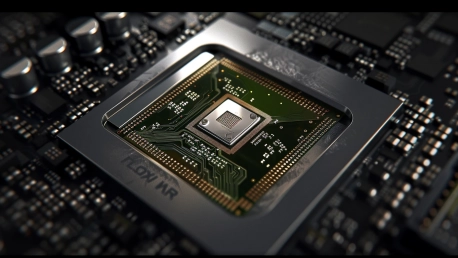The cloud computing landscape has always been evolving, but the integration of GPUs into cloud services has triggered a revolution, especially for AI and machine learning applications. One company, Paperspace, has been at the forefront of this transformation. From its pioneering days to its recent strategic merger with DigitalOcean, Paperspace demonstrates the compelling synergy of technology and strategy aimed at dominating the GPU cloud market. The journey of Paperspace from its inception to becoming an integral part of DigitalOcean reads like a case study in foresight and adaptability, capturing the very essence of innovation in the rapidly changing world of cloud computing.
Pioneering GPU Cloud Services: The Early Days of Paperspace
When Paperspace was founded about a decade ago, the concept of cloud-based GPU computing was far from mainstream. Most companies were yet to realize the potential of GPUs for computing tasks that require intensive parallel processing. At this time, AWS had just started experimenting with GPU instances, but the broader market remained largely unaware. Paperspace, however, envisioned a future where GPU-powered cloud resources would become essential, particularly for AI applications. This early vision enabled Paperspace to carve out a niche as the first fully GPU-dedicated cloud service provider. Their pioneering approach not only filled a critical gap in the market but also laid the groundwork for future developments in the sector.By focusing strictly on GPU-based services, Paperspace differentiated itself from other cloud providers, laying the groundwork for what would become a booming sector. Their early emphasis on GPU technology provided them with invaluable insights, and their experiences would later inform the strategies of other major hyperscalers such as Microsoft Azure and Google Cloud when they eventually entered the GPU market. This early focus on GPUs also allowed Paperspace to build a robust technical foundation, which would prove crucial as the demand for AI and machine learning solutions skyrocketed. Their specialization enabled them to stay ahead of the curve, offering comprehensive solutions that were finely tuned to the needs of developers and researchers alike.
The Evolution of the Cloud Market: From Novelty to Necessity
The cloud market has seen significant evolution since the early days of Paperspace. It was not long before other cloud giants like AWS, Microsoft Azure, and Google Cloud recognized the growing demand for GPU-based services and launched their own versions. AWS, already an established player in the cloud space, introduced GPU instances fairly early on, but their integration was more exploratory than mainstream. However, the surge in AI and machine learning applications brought GPUs to the forefront, transforming them from a niche feature into a necessity for any competitive cloud service. This shift marked a turning point, validating Paperspace’s early market foresight and cementing its role as a trailblazer in the industry.By 2016-2017, both Microsoft Azure and Google Cloud had incorporated GPUs into their cloud services, thereby broadening the market and introducing new levels of competition. Despite the entry of these larger players, Paperspace retained its identity as a pioneer, having been the first to build a cloud offering entirely around GPU technology. This distinct positioning allowed them to maintain a competitive edge and continue attracting clients who needed specialized, high-performance computing resources. The evolving market dynamics underscored the growing importance of GPUs and validated the early investments and innovations made by Paperspace. Their focus on fostering a deep understanding of GPU capabilities set them apart in an increasingly crowded market, ensuring they remained a leader in cloud-based AI and machine learning solutions.
Joining Forces: The Strategic Acquisition by DigitalOcean
In 2023, in a move that underscored the growing importance of GPU power, Paperspace merged with DigitalOcean in a $111 million deal. This acquisition was a significant milestone, bringing together Paperspace’s specialized GPU know-how and DigitalOcean’s developer-centric cloud services. DigitalOcean, known for targeting developers and startups, saw this merger as an opportunity to expand its service offerings and cater to a broader, more sophisticated audience. The partnership aimed to harness the unique strengths of both companies, positioning them to better serve the burgeoning AI market and meet the increasingly complex computational needs of their clients.The merger aimed to leverage DigitalOcean’s established foothold with smaller developers and startups, potentially scaling up the combined entity’s capabilities. This synergy was particularly important given the rising demand for GPUs driven by AI advancements. While DigitalOcean had previously excelled in the developer market, the addition of Paperspace’s GPU expertise could help the company break into higher-tier markets and serve more complex computational needs. The strategic alignment between Paperspace’s deep technical knowledge and DigitalOcean’s established market presence created a powerful combination, poised to capitalize on the explosive growth in AI and machine learning applications. Their collaborative strength and shared vision promised to deliver innovative solutions and set new benchmarks in the cloud computing industry.
Navigating Growth and Challenges Post-Merger
Despite the strategic benefits, the merger was not without its challenges. DigitalOcean had built its reputation by catering to smaller firms, often acting as a stepping stone to larger, more comprehensive cloud services offered by hyperscalers like AWS and Google Cloud. Convincing the market of its scalability and long-term growth potential remained a hurdle. This transition required not only technical advancements but also a cultural shift to accommodate the needs of larger enterprises. However, the combination of DigitalOcean’s user-friendly interface and Paperspace’s advanced GPU capabilities provided a compelling value proposition, promising to broaden their customer base and enhance their competitive positioning.Yet, the AI revolution presented a unique opportunity. The increasing need for compute resources for AI and machine learning made this the perfect time to double down on GPU cloud services. Paperspace, now under the DigitalOcean banner, found itself well-positioned to meet this surging demand. However, the company’s ability to scale effectively and compete against established hyperscalers remained a critical focal point. The merger aimed to bridge this gap by integrating Paperspace’s specialized expertise with DigitalOcean’s extensive market reach, creating a unified platform capable of addressing a wide range of computational needs. Their combined efforts focused on optimizing performance, reducing costs, and enhancing user experience to sustain long-term growth and market relevance.
Insatiable Demand for Compute: The AI Industry’s Driving Force
One common thread in the contemporary tech landscape is the insatiable demand for computational resources driven by AI. Founder Erb of Paperspace frequently highlights this near-limitless need for compute power, a sentiment echoed by industry experts. With AI technology advancing rapidly, the demand for robust computational platforms for tasks like model training and machine learning is growing exponentially. This relentless pursuit of computational excellence underscores the critical role that GPUs play in enabling cutting-edge AI research and development. The provision of scalable, high-performance GPU resources remains a top priority for companies looking to stay ahead in this competitive landscape.Paperspace and DigitalOcean aim to address this demand by offering GPU resources that range from older, cost-effective models to the latest cutting-edge GPUs. This diversified approach allows them to cater to a wide spectrum of needs, from budget-conscious startups to high-demand AI research labs, thereby enhancing their market positioning. The flexibility to choose from a range of GPU options ensures that clients can optimize their computational resources based on specific project requirements, balancing cost and performance. This strategic approach not only maximizes resource efficiency but also positions Paperspace and DigitalOcean as versatile and adaptive leaders in the GPU cloud market. By meeting the diverse needs of their clientele, they continue to build a robust and resilient business model that can adapt to the evolving demands of the AI industry.
Technological Advancements and GPU Innovation
The cloud computing landscape is constantly evolving, and the integration of GPUs into cloud services has sparked a significant revolution, particularly in the fields of AI and machine learning. One standout company in this domain is Paperspace, which has been at the cutting edge of this transformation. Paperspace’s journey from its early days to its recent strategic merger with DigitalOcean illustrates the powerful blend of technological innovation and strategic foresight. This merger marks a pivotal moment, showcasing Paperspace’s relentless pursuit of excellence and its commitment to staying ahead in the competitive GPU cloud market.The story of Paperspace is a testament to the importance of adaptability and forward-thinking in an industry characterized by rapid change. By combining resources and expertise with DigitalOcean, Paperspace has positioned itself to leverage new opportunities and deliver enhanced services. This merger not only expands their technological capabilities but also broadens their market reach, promising a future where advanced AI and machine learning applications become even more accessible.Through its strategic decisions and innovative approaches, Paperspace captures the essence of what it means to thrive in the fast-paced world of cloud computing. The company’s history, highlighted by its strategic moves and technological advancements, serves as an inspiring example of how foresight and adaptability can drive success in an ever-changing technological landscape.









